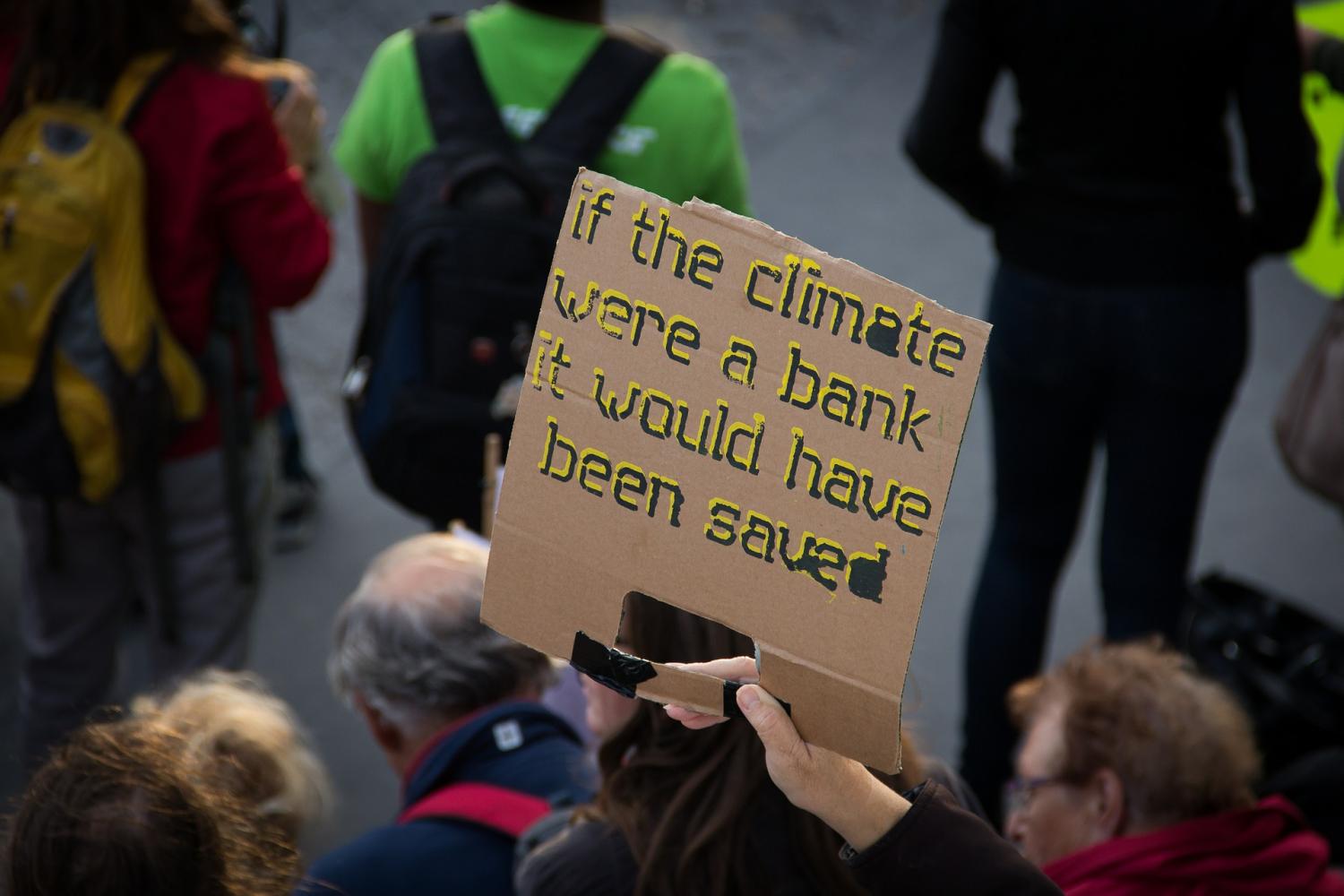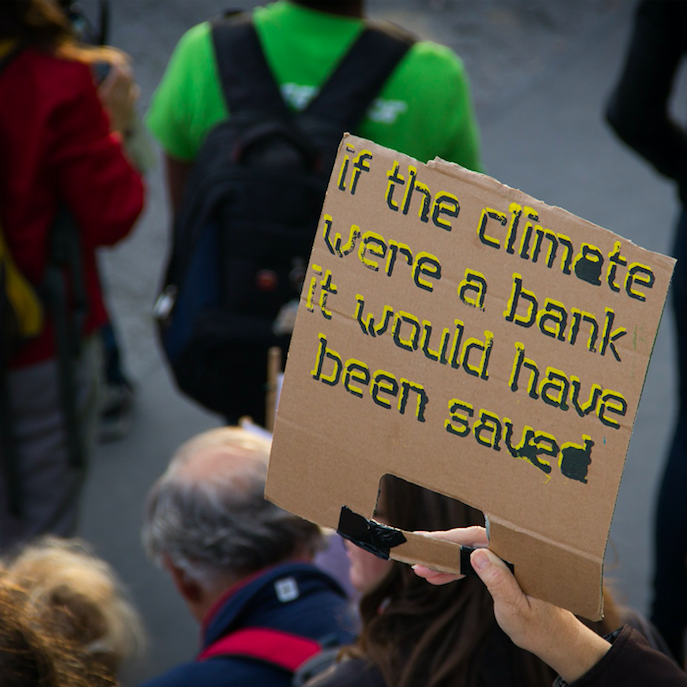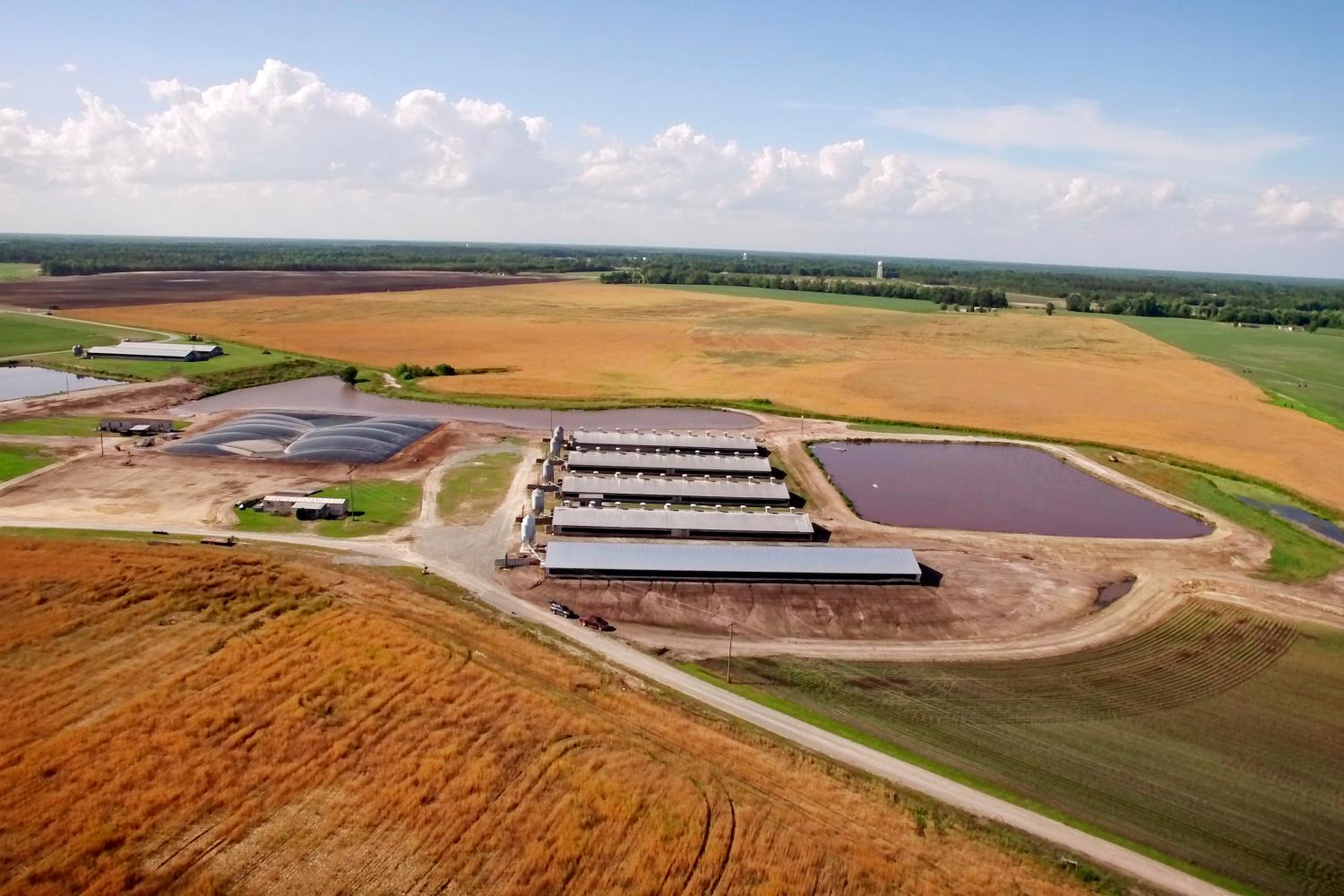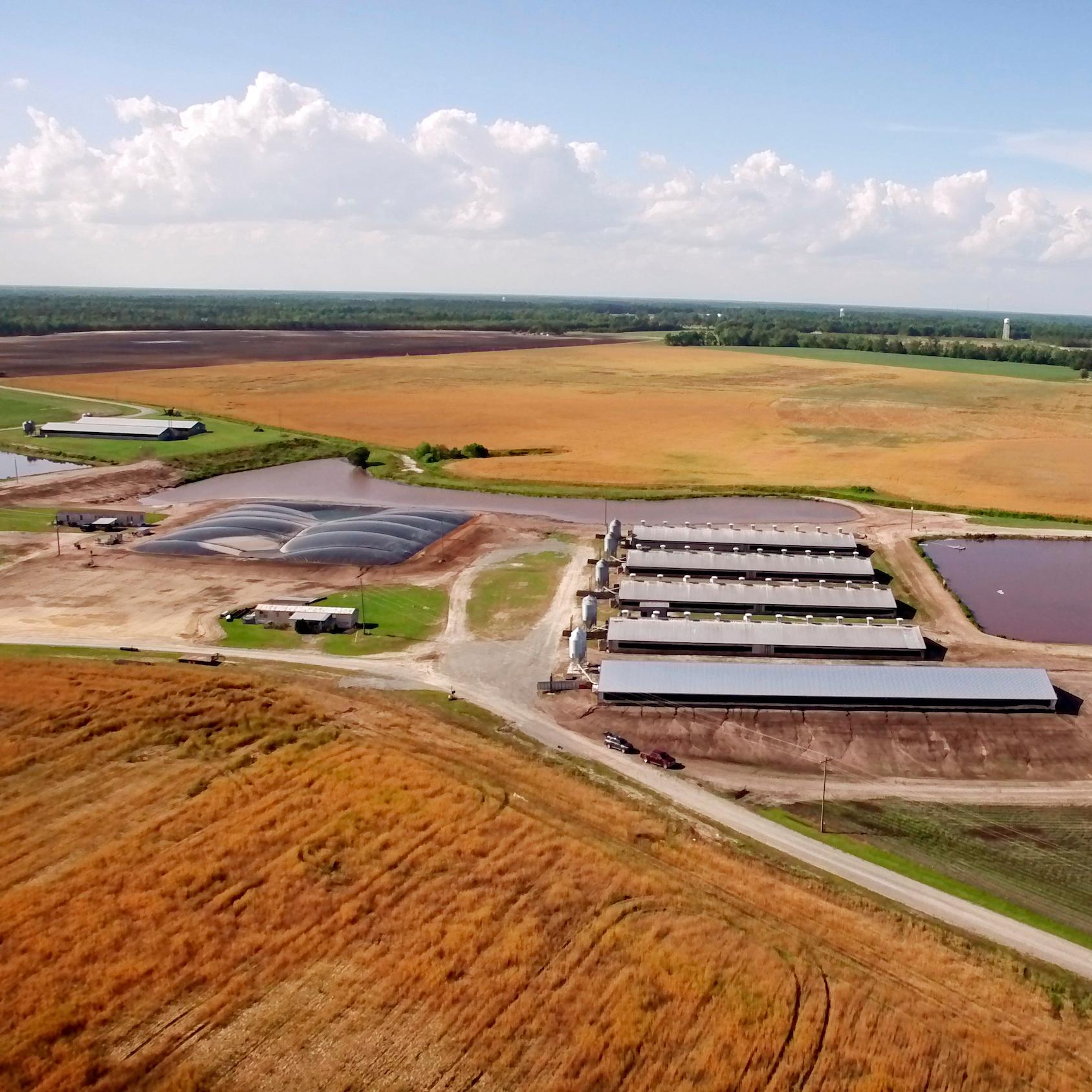The Usual Suspects Are Ready for the Global Climate Strike


The upcoming Global Climate Strike, a weeklong series of walkout events beginning this Friday, September 20, provides a unique opportunity for leading brands to engage their customers and employees — current and future — in what promises to be one of the most significant global movements of its kind. Nevertheless, only a scattering of well-known progressive brands has publicly endorsed participation by their employees.
What is the Global Climate Strike?
The September 20 Global Climate Strike was inspired by Swedish student Greta Thunberg, whose determination to advocate for climate action sparked a wave of school strikes in Europe, leading to the international #FridaysForFuture movement.
As of this writing, more than 2,400 Global Climate Strike events are planned in more than 115 countries, including 1,000 cities. The series of events coincides with the 2019 Climate Week activities in New York City.
Climate action is mainstream, in some places
Given that New York City is the location for Climate Week, of particular interest is participation by organizations in the United States. Groups in 145 U.S. cities have already registered their Global Climate Strike events.
As one demonstration of the degree to which climate action is perceived as a mainstream issue in at least one leading coastal city, the New York City Department of Education has announced that it will excuse all students with parental permission to participate in the Global Climate Strike from attending school on September 20.
Round up the usual suspects
If any leading U.S. corporations are supporting participation by their employees in the Global Climate Strike, they are not doing so publicly.
The scattering of exceptions to the corporate silence include these companies highlighted in an August 27 press release from the climate action organization 350.org.
Lush Cosmetics is supporting employees who participate by shuttering all of its operations and closing its 250 stores on Friday; Canadian stores will close a week later. The company also plans to amplify messages from the strikers through its stores and digital platforms.
Ben & Jerry’s is encouraging its fans to “ratchet up the pressure on politicians and policy makers,” and join a Global Climate Strike event in their area. They have provided a link to the Global Climate Strike event registration page on their website.
Seventh Generation is also using its website to encourage customers to register for events, and it is planning to donate all of its media resources to climate messaging from September 20 to September 27.
Patagonia is supporting the Global Climate Strike through its Patagonia Action Works organization. The company has also posted an essay on student climate activists by employee-activist Madalina Preda on its blog. Patagonia is also planning walkouts from all of its stores on September 20.
Since 350.org’s announcement last month, a few other companies have announced they will participate in Friday’s walkout as well.
For example, in an acknowledgment how climate change can have an impact on the sporting industry in the long term, dependent Vermont-based Burton Snowboards announced its support for the Global Climate Strike on August 30:
“We’re closing all of our global offices and owned stores for business on Friday, September 20th so everyone can walk out and join the strike in their regions. We’re using all of our owned flagship stores as a gathering place on the morning of September 20th where people can make signs and walk to nearby marches.”
Finally, the organic foods company Nature’s Path said some of its U.S. employees will participate in this Friday’s strike. A week later, the company’s staff in downtown Vancouver will join environmental activists during the Canadian Climate Strike on September 27. In addition, Nature’s Path said it will donate a portion of all online sales from the company’s online shopping portal, up to $10,000, to 350.org.
Employee activism takes center stage
With just a handful of companies in public support, the Global Climate Strike is turning into a test case for employee activism.
Many companies may well be quietly supporting employees who choose to participate in Global Climate Strike events, especially if they are acting as individuals. If so, they have not pushed their support into the media spotlight.
In addition, the participation issue becomes complicated if employee activists identify themselves through their corporate brand.
Traditionally, employee actions have fit into the worker union framework, dealing with personal issues like pay, hours, benefits and safety.
More recently, employee activists have begun to lobby their companies over corporate policies on climate change, sexual harassment, immigrant rights and other matters related to corporate social responsibility.
That can lead to tension between a brand and its workers. For example, Google sparked an uproar leading into last summer’s Pride march in San Francisco, when it asked employees marching with its float to refrain from protesting anti-LGBTQ content on YouTube.
Another type of tension can occur when employees protest corporate policies that support controversial government policies, as recently illustrated by the employee walkout at Wayfair.
A variation on that tension between a brand and its employees is also in play at Amazon, where hundreds of employees have publicly announced that they will join the Global Climate Strike. The action follows other attempts by Amazon employees to advocate for ramping up climate action at the company.
As the corporate social responsibility movement matures, companies are beginning to find their voices on many issues of fundamental public concern, from racism to gun safety. It will be interesting to see how many leading U.S. corporations become part of the Global Climate Strike whether they intend to or not, through the actions of their employees.
Editor's note: This wave of employee activism won’t cease anytime soon. So, what’s next? Be a part of this ongoing conversation at 3BL Forum: Brands Taking Stands - What's Next, October 29-30 at National Harbor, MD, just outside Washington, D.C. Together, the 80-plus speakers we will have onstage promise a two-day event that will be fast-paced, high-octane and invaluable with their perspectives on the latest in the environmental, social and governance (ESG) community.
We’re pleased to offer TriplePundit readers a 25 percent discount on attending the Forum. Please register by going to the 3BL Forum website and use this discount code when prompted: NEWS2019BRANDS.
Image credit: Niek Verlaan/Pixabay
Lush Closing Operations and Mobilizing Employees to Strike for the Climate


Friday, September 20, will not be business as usual at the Lush beauty and bath products chain. Instead, the retailer will close its 200 U.S. stores, factories, headquarters and even its e-commerce operations, and mobilize its 5,000 employees to support this Friday’s Global Climate Strike. On September 27, Lush will do the same across its Canadian operations.
With around 250 stores in the U.S. and Canada, the company has a loyal and growing base of mostly Generation Z and Millennial customers, reporting an impressive $530 million in North American sales in 2017. Boasting about 4.5 million Instagram followers, along with its thriving online sales, the brand is hitting the sweet spot for the values-driven younger generations that appreciate its “naked” (non-packaged) products and vegetarian-only ingredients.
A commitment to disruptive change at Lush
In July 2019, the chain launched "carbon-positive cork-based packaging," which Lush shipped by commercial sailboats rather than cargo ships. Building upon that decision, the company’s move to join the Global Climate Strike, while making a dent in profits, is likely to strengthen the loyalty not only of customers but of employees, who Lush said will be paid during their day of protest.
“As a business that’s long fought for the environment, we are acutely aware of the climate crisis and recognize both the indisputable science behind it, and the need for strong, tangible action to address it,” said Mark Wolverton, CEO of Lush Cosmetics North America, in a recent public statement. “We are committed to disruptive, transformative change. That means a break in ‘business as usual,” holding our global leaders accountable and answering the call of the youth activists to join them on the streets this September.”
Engaging customers to push ahead for climate action
This week Lush employees are handing customers pamphlets of carbon-saving actions and encouraging them via social media to join 350.org’s “week of climate action.” The campaign group’s North America director, Tamara Toles O’Laughlin, lauded the values-based decision by Lush, which is joining brands including Patagonia, Ben & Jerry’s and Seventh Generation to take radical action. “The willingness to disrupt the norm is an indicator that the time has come for everyone, especially global leaders, to get out of their comfort zones to ensure that communities around the world can thrive with clean air, water, and are safe from the worst of the climate crisis,” O’Laughlin said.
According to Carleen Pickard, Lush’s ethical campaign specialist, the direct impact that hurricanes, wildfires, record-breaking heatwaves are having on U.S. staff was a major impetus for the decision to close down operations. “The losses as a business for the day are nominal in comparison,” she told the beauty magazine Allure.
In addition to the environmental costs associated the decision to strike for the climate, Lush can point to other reasons for supporting Friday’s actions as well. Companies across all sectors are facing the reality that employees increasingly want to work for organizations that are willing to take a stand on a wide range of issues. And given that the U.S. retail sector averages a 60 percent annual turnover rate, Lush may also be hoping that the loyalty factor it can inspire among its employees will be well worth any lost business – as the company could benefit from the expenses associated with recruiting, hiring and training employees.
Editor's note: Employee engagement stories like the one discussed above will be a valuable part of the agenda next month at 3BL Forum: Brands Taking Stands - What's Next, October 29-30 at National Harbor, MD, just outside Washington, D.C. Together, the 80-plus speakers we will have onstage promise a two-day event that will be fast-paced, high-octane and invaluable with their perspectives on the latest in the environmental, social and governance (ESG) community.
We’re pleased to offer TriplePundit readers a 25 percent discount on attending the Forum. Please register by going to the 3BL Forum website and use this discount code when prompted: NEWS2019BRANDS.
Image credit: Lush UK/Facebook
Sustainable Investing At All-Time High, Says Morgan Stanley


It may be time to finally put to rest the debate over whether sustainable investing is “mainstream.” A remarkable 85 percent of U.S. individual investors now express interest in sustainable investing strategies, according to a new study from the financial services firm Morgan Stanley.
The third edition of the individual investor survey, Sustainable Signals, examines the attitudes, perceptions and behaviors of individual investors towards sustainable investing. This year’s study showed investor enthusiasm at an all-time high. That includes 95 percent of millennials who now express interest in sustainable investing, a generational trend closely followed in TriplePundit’s ongoing coverage.
These investors are putting words to action. About half of the general population (52 percent) and 67 percent of millennials are taking part in at least one sustainable investing activity, such as investing in companies or funds that target specific environmental or social outcomes.
Matching investments to impact
Morgan Stanley’s study underscores the growing popularity of impact investing, as 3p has reported, in which investors want products that match their interests. Some 84 percent of all investors surveyed, and 90 percent of millennials, want the ability to tailor their investments to their impact goals and they want to track the impact return on the investment in an impact report.
Individual investors’ embrace of sustainable investing is in lockstep with the 90 percent of institutional investors globally who believe ESG integrated portfolios are likely to perform as well or better than non-ESG integrated portfolios. An increasing number of banks also have their eyes on the $23 trillion global market for sustainable investing.
In the U.S., sustainable investing assets reached $12 trillion in 2018, according to the US SIF: The Forum for Sustainable and Responsible Investment. That’s one in four dollars in total assets under professional management in the U.S.
Debunking the myth of a financial trade-off
Individual investors’ conviction about sustainable investing outweighs concerns that there might be a financial trade-off: 86 percent believe that corporate environmental, social and governance (ESG) practices can potentially lead to higher profitability and may be better long-term investments, the Sustainable Signals study found.
In fact, there is growing evidence that investors don’t have to make a financial trade off. In August another study by Morgan Stanley showed that sustainable funds provide both financial performance and lowered risk. The returns of sustainable funds are no different, says Morgan Stanley Institute for Sustainable Investing, while offering investors comparatively lower downside risk—as well as impact on a broad range of environmental, social and governance issues.
“The myth that sustainable investing requires a financial tradeoff has been surprisingly sticky, despite research demonstrating that companies with strong social or environmental practices outperform their peers on a variety of measures,” Matthew Slovik, Head of Global Sustainable Finance at Morgan Stanley said in a press release. “By looking at thousands of mutual funds across multiple asset classes, we found that sustainable investments can help investors meet a variety of financial objectives for generating returns and managing risk.”
In its white paper, “Sustainable Reality: Analyzing Risk and Returns of Sustainable Funds,” Morgan Stanley analyzed 10,723 funds, using Morningstar data on exchange traded and open-ended mutual funds active in any given year from 2004-2018. The key findings:
- There is no financial tradeoff in the returns of sustainable funds and traditional funds. No consistent or statistically significant difference in total returns existed between ESG-focused and traditional mutual funds and ETFs.
- Sustainable funds may offer lower market risk. Sustainable funds experienced a 20 percent smaller downside deviation than traditional funds, a consistent and statistically significant finding.
Steady in turbulent winds
The study also found that in years of turbulent markets, such as 2008, 2009, 2015 and 2018, sustainable funds' downside deviation was significantly smaller than traditional funds.
Looking specifically at the last quarter of 2018, when U.S. stock market volatility spiked, the study found that, despite negative returns for nearly all funds, the median sustainable fund outperformed the median traditional fund by 1.39 percent in U.S. equity returns.
“While the last quarter of 2018 may have caused angst among many investors, those with investments in sustainable funds likely saw smoother fluctuations and potentially fewer losses,” said Slovik.
For the 53 percent of investors—including 59 percent of millennial investors—who believe that investing sustainably requires a financial tradeoff, according to Morgan Stanley, this news should send the current wave of enthusiasm for sustainable investing soaring even higher.
Image credit: Gerd Altmann/Pixabay
How Will We Know CEOs are Making Good on Their Promise to All Stakeholders?


Co-written with Michael Green
For decades, corporate executives have held to the standard that shareholder value comes first, above all other concerns. Until now. Business Roundtable put forth the news we have been waiting for: a new Statement on the Purpose of a Corporation, signed by nearly 200 CEOs. The statement pledges each CEO to lead for the benefit of all stakeholders, such as customers, employees, suppliers, and communities — not just shareholders. It’s not clear what each corporation will do to make good on their promise, but if they mean business, their businesses will need to change.
If corporations, backed by investors, do change how they operate to create value for all stakeholders, how do we tell? Most corporations are not designed — in terms of policies, procedures, or precedent — to meet this revised purpose. The daily stock price and quarterly earnings don’t tell us much about how well corporations are serving these wider stakeholders. Soaring stock prices and economic growth has bubbled along nicely in recent years and unemployment is at record lows. Our standard economic dashboard says everything is fine, so what do we expect to be different?
One of the first signs of a turning tide in business is the new focus on delivering long-term value for shareholders. An increasing number of corporations have embraced “shared value” concepts and sustainability strategies over the past decade. From the investor side we have seen Larry Fink of BlackRock leading the way with his CEO letters of 2018 and 2019 urging businesses to take social and environmental risks more seriously. Indeed, the Business Roundtable announcement urges “leading investors to support companies that build long-term value by investing in their employees and communities.” It takes two to tango and both partners, CEOs and investors, now say they are ready to dance.
A second and crucial piece of evidence will be how corporations invest in their employees and communities. In terms of creating the capability to lead for all stakeholders, a number of signatory companies are creating internal knowledge that may be useful in balancing stakeholders through Global Pro Bono programming, where employees are directly engaging with mission-driven organizations to advance corporate social goals.
The SAP Social Sabbatical program is now the largest Global Pro Bono program, serving communities through local and cross-border efforts, while also building leaders for just the type of purpose-driven company that the Business Roundtable statement describes. Other leaders in the Global Pro Bono space include 3M, Medtronic, Pfizer, EY, Johnson & Johnson, FedEx and Dow; and the newest entrants to the Global Pro Bono space from the financial services sector, Moody’s and BlackRock.
JPMorgan Chase has married its human capital commitment of pro bono assistance with financial capital in its multi-year commitments to Detroit, Chicago, and DC, seeking to show significant positive impact on the economies of these large cities. And John Deere, a company “committed to those who are tied to the land” has made a decade-long commitment to agrarian villages in rural India through the Joint Initiative for Village Advancement (JIVA), and is now adapting this model to Nigeria through the Rayuwa program; in each case, Deere combines its philanthropic dollars with pro bono assistance to these communities.
While these programs are relatively small in relation to the overall global footprint of the corporations in question, each provides a unique opportunity for leaders to gain deep insights into the real challenges and desires of communities, customers, and employees. Obtaining this level of understanding can help companies avoid the age-old problem of their providing what they want to give, versus what is actually needed.
Ultimately, we will know that CEOs are making good on their promise if we measure it. The challenge is that our economic measures only tell part of the story. This is evident from the findings of the Social Progress Index, a benchmark of national performance based exclusively on social and environmental quality of life indicators. By this measure, the United States is busting, not booming. We rank just 25th in the world on social progress and we are one of a handful of countries going backwards. As Professor Michael Porter of Harvard Business School, chief adviser to the Social Progress Index, puts it, “America is mired in a social progress recession.” The new bottom line for a nation pursuing inclusive, sustainable long-term growth must be GDP plus social progress. Business cannot deliver this alone, but it has a critical role to play.
Such a strong statement from the Business Roundtable feels like a watershed moment. Corporate America’s volte face means a new focus on employees and communities is possible. Whether corporations possess the know-how required to lead for all stakeholders is yet to be seen. But what we can see are incremental steps that should be watched closely in the years to come.
*Michael Green is CEO of the Social Progress Imperative. An economist by training, he is co-author (with Matthew Bishop) of Philanthrocapitalism: How Giving Can Save the World and The Road from Ruin: A New Capitalism for a Big Society.
Image credit: Alessandro D'Andrea/Pixabay
This GHG Measurement Model Could Be a Game-Changer for the Agriculture Industry


This article series is sponsored by Smithfield Foods and produced by the TriplePundit editorial team.
There is a good reason why Smithfield Foods was the first major protein company to measure its greenhouse gas (GHG) emissions. The protein supply chain is front-loaded with GHGs long before livestock arrives at the processing facility. A lack of uniformity among suppliers adds another layer of complexity to the already daunting task of tracking emissions.
Nevertheless, Smithfield has plunged into the effort, backed by a pledge to reduce its absolute GHG emissions 25 percent by 2025, compared to a 2010 baseline. That includes everything in the supply chain, from hog feed to the finished pork products and the transportation in between.
If that sounds like an ambitious challenge, it is. The payoff could be equally impressive. Smithfield and its collaborators have created a measurement model that could be used throughout the meat processing industry.
Applied nationally, and globally, the impact would be significant. Smithfield alone expects to reduce its absolute GHG emissions by more than 4 million metric tons, or the equivalent of taking 900,000 cars off the road, through its “25 by ‘25” commitment.
Not too long ago, that would have been a nearly impossible task. Today it’s a different story. Biogas digesters and other emissions-reducing systems are now mainstream technologies. Just as importantly, a deep well of sustainability research and expertise is at hand.
Collaborators in the Smithfield effort include the nonprofit Environmental Defense Fund (EDF) and the University of Minnesota’s NorthStar Initiative for Sustainable Enterprise, which developed the GHG measurement model.
Rylie Pelton, a post doctorate associate at the university, explains how this collaboration connects the private sector with fact-based insights into their operations: “NorthStar is about applied science. We talk with companies like Smithfield that are interested in sustainability and figuring out what challenges they are facing. Our part is the research to overcome those challenges.”
Without fact-based research, well-intentioned companies are left to practice a hit-or-miss approach to reducing GHG emissions. NorthStar helps identify priorities for action based on impact.
When the Smithfield collaboration began in 2016, NorthStar had to start from scratch. A lack of visibility among Smithfield’s feed suppliers was one major complication. Sorting through the different hog suppliers was another, as Smithfield receives part of its hog supply from contract farms. NorthStar also recognized the need to refine data collection and analysis with more precision. The institute had previously performed a national supply chain study for The National Pork Board, but that was just a jumping-off point for new research.
Smithfield’s NorthStar model relies on actual data from the company’s operations, not industry estimates. As a result, the model can trace specific details right down to the capacity of individual feed mills and their feed mix.
“For example, if your North Carolina facility purchases hogs from an operation in a particular county, and that operation purchases feed from several other counties, we can see what part of the supply chain drives emissions,” Pelton explains. The model enables Smithfield to track water resource impacts, too.
The biogas opportunity
Not surprisingly, one element that sticks out like a sore thumb is methane emissions from hog manure. Improvements in that area will make a significant difference, Pelton says.
Smithfield also has high expectations for reducing GHG emissions through improved manure management. The organization foresees significant bottom-line benefits as well.
In a blog post last December, EDF summarized the steps Smithfield is taking: “Smithfield announced earlier this fall that it will invest hundreds of millions of dollars in infrastructure that converts manure methane emissions into renewable natural gas. The new technology will be installed on 90 percent of Smithfield’s hog finishing spaces in North Carolina and Utah; and on nearly all in Missouri. In total, the company will capture emissions from more than 1,000 farms nationwide.”
Typically, biogas from agricultural operations is used on-site. Smithfield’s approach is more ambitious. As EDF describes, the company has partnered with Dominion Energy in a $250 million joint venture called Align Renewable Natural Gas (RNG) that will feed biogas from manure into the gas distribution grid in North Carolina, Utah and Virginia, where it can be used off-site by residential and commercial customers. That distribution partnership is a major key to success.
Pelton notes that it is difficult to incentivize farmers to invest in manure covers and biogas digesters. The new Align RNG venture provides that incentive by enabling farmers to tap into a potential new revenue stream. In effect, it monetizes manure biogas through aggregation. According to a Smithfield contract farmer, that revenue could run as high as $70,000 annually for an individual farm.
It’s complicated
Manure management is also just part of the work undertaken by Smithfield. The company is working with EDF to reduce nitrous oxide emissions from grain farms. Reducing carbon emissions by improving feed conversion efficiency is another goal.
The company has also targeted its processing plants for energy-efficiency upgrades, including refrigeration and boiler equipment, and it is working to reduce carbon emissions from its transportation chain.
Pelton also notes that Smithfield has some interesting choices to make regarding downstream impacts. For example, emissions can be reduced at the consumer end by adding more pre-cooked items to the product line, but that could make it more difficult to reduce emissions at the processing plant.
As for NorthStar, Pelton emphasizes that the model they develop with Smithfield can be used by any company in the pork industry. Beyond that, NorthStar is using lessons learned from the Smithfield collaboration to build a supply chain model that can be applied to poultry and wheat crops on an industrywide basis.
All in all, the Smithfield effort demonstrates the power of collaboration. By working together on a common goal, the private sector, the research community, and environmental organizations can break down a seemingly impossible task and create new pathways for swift, effective action on carbon emissions.
Image courtesy of Smithfield Foods
Bill Gates, Ban Ki-Moon Launch $1.8 Trillion Climate Resilience Roadmap


From melting Arctic icebergs to record-breaking European heatwaves and super-charged hurricanes, floods, and wildfires in the Americas, climate change is making its impact felt across the globe. Climate-related disasters are now occurring at the rate of one a week, with the resulting costs estimated at $520 billion a year, according to the United Nations. Yet plans for climate resilience and adaptation are often overlooked as governments and donor agencies grapple with climate change priorities, policymaking and finance.
A new report by the Global Commission on Adaptation, headed by Microsoft founder turned philanthropist Bill Gates and former U.N. Secretary-General Ban Ki-moon, aims to change that. Released last week, as the devastation wreaked by Hurricane Dorian continued to unfold, it mapped out a $1.8 trillion blueprint to ready the world to withstand intensifying climate impacts. The Commission launched the report in a dozen capitals, with the overarching goal of jolting governments and business into action.
Within that blueprint lies numerous opportunities for companies worldwide. Private-sector investment will be crucial if the world is to cope with climate volatility in the coming decades—and companies in turn could see growth through projects related to water, agriculture and infrastructure.
Five climate resilience priorities
Specifically, the report calls for massive public- and private-sector spending over the next decade on disaster early warning systems, climate-resilient infrastructure, and agriculture, mangrove protection and water security. The return on investment, the Commission estimates, would be substantial: as much as $7.1 trillion in environmental and social benefits, economic gains driven by innovation and avoided climate-related losses.
To implement its adaptation blueprint, at the pace and scale required, the Commission calls for a “revolution” in how governments and business factor climate risks into decision-making and how planning decisions are made at every level. “With greater support for innovation, we can unlock new opportunities and spur change across the global ecosystem,” Gates said. “Adaptation is an urgent issue that needs support from governments and businesses to ensure those most at risk have the opportunity to thrive.”
The alternative, the report warns, will be deepening poverty, soaring levels of migration and an “irrefutable toll on human life.” Without adaptation, climate impacts may push more than 100 million people in developing countries into poverty by 2030, depress growth in global agriculture yields by up to 30 percent by 2050 and make water shortages a reality for more than 5 billion people by mid-century. Rising sea levels and storm surges could force hundreds of millions from coastal cities, generating global costs of more than $1 trillion a year.
Opportunities for investing in resilience abound during NYC Climate Week
The Commission’s report landed just in time to influence the Climate Action Summit convened by current U.N. Secretary-General Antonio Guterres in New York City this month. On September 23, heads of government, CEOs and civil society leaders will meet in New York to provide a "shot in the arm" to the ongoing international climate negotiations.
Guterres has urged national leaders to turn up with concrete, realistic plans to enhance their current mitigation pledges by 2020, in line with reducing global greenhouse gas emissions by 45 percent over the next decade, and to net zero by 2050. Meanwhile, business leaders are expected to announce or reinforce commitments to their own GHG reduction targets and to expand private-sector climate finance. In the build-up to the summit, 28 global corporations committed to or reaffirmed science-based targets for operational emissions aligned with limiting global temperature rise to 1.5 degrees Celsius above pre-industrial levels.
Adaptation and resilience is one of nine action areas up for discussion at the summit, which will kick off the annual Climate Week NYC. Other priorities include energy and industry transition, climate finance, city and local action, and nature-based solutions.
The Global Commission on Adaptation has contributed to the resilience agenda that governments will consider, as have the World Economic Forum and leading insurance companies. The action track will focus on disaster prevention and recovery, as well as “integrating climate risks into public and private sector decision-making to assure sustainability of food, water and jobs for the future.”
On all fronts, the hope is that the Gates-Moon plan, coupled with the summit in New York, will trigger the major progress the world sorely needs at the next Conference of Parties to the U.N. Framework Convention on Climate Change (UNFCCC) in December.
Image credit: Erdenebayar Bayansan/Pixabay
Olympic Champion Hannah Mills Launches #BigPlasticPledge


Rio 2016 sailing gold medalist Hannah Mills has launched the Big Plastic Pledge, a global campaign to unite athletes and fans around the issue of plastic pollution. The campaign is supported by the International Olympic Committee (IOC), as part of its commitment to the U.N. Clean Seas Initiative.
The Big Plastic Pledge calls on athletes and fans to reduce the use of single-use plastic in their daily lives by pledging to at least three actions, such as using refillable water bottles, refusing plastic packaging and encouraging sports clubs and event organizers to find alternatives to single-use plastic.
Hannah Mills (U.K.) won a silver medal at the Olympic Games London 2012 and a gold medal at the Olympic Games Rio 2016. She is also a two-time world champion in the Women's 470 class, having won in 2012 and 2019.
As a world-class sailor, Mills has experienced first-hand the devastating impacts of plastic pollution on the world’s oceans, which is what triggered her to launch the Big Plastic Pledge.
“I think, as athletes, we have such a platform to change people’s habits and demand more from our sporting events and organizers,” Mills said. “If we unite together, our voice can be so loud and powerful that we really can change people’s attitudes globally.”
Each year, we produce over 300 million tonnes of plastic, half of which we use only once and then throw away. Eight million tonnes of plastic end up in our seas every year, harming sea life and threatening our food security and health. Plastic pollution also impacts sports from surfing and sailing to hiking, cycling, running and skiing, as it damages the natural environment on which they depend.
As the leader of the Olympic Movement, the IOC offers guidance and support to International Sports Federations (IFs), National Olympic Committees (NOCs) and athletes in their efforts to address plastic pollution and other sustainability issues.
In June 2018, the IOC joined U.N. Environment’s Clean Seas campaign against plastic pollution and called on the Olympic Movement to come on board. Eleven International Sports Federations, four National Olympic Committees, worldwide Olympic partners Dow, Procter & Gamble and Coca-Cola, and the Japanese town of Ichinomiya—host of the Tokyo 2020 surfing competitions—have since joined the initiative, as well as Hannah Mills herself.
Sustainability is central to the Olympic Movement’s vision of “building a better world through sport." It is also one of the three pillars of Olympic Agenda 2020, the strategic roadmap for the future of the Olympic Movement.
A version of this story was previously published in the 3BL Media newsroom.
Image credit: IOC
ASBC: A Decade of Pushing for the Triple Bottom Line


This story is part of an editorial series featuring speakers, organizations and themes we will discuss in depth at the 2019 3BL Forum: Brands Taking Stands—What’s Next, a two-day event on Oct. 29-30 that delves into the "why" and "how" behind corporate responsibility. You can follow the series here.
Despite the mounting collection of evidence that operating a business sustainably is not just good for the environment but the bottom line as well, many in the corporate world still cling to the old business philosophies.
Through advocacy and illustration, the American Sustainable Business Council (ASBC) is committed to growing a business model with a focus that goes beyond profit. ASBC members and member organizations represent more than 250,000 socially and environmentally conscious businesses in the U.S., according to Executive Vice President Thomas Oppel. “ASBC believes that enterprise can thrive financially in an ever-competitive economy, not in spite of a focus on the ‘triple bottom line,’ but because of it,” Oppel said.
The organization advocates for policy change and informs business owners, policymakers and the public about the need and opportunities for building a vibrant, inclusive and sustainable economy, he added.
The 10-year-old organization was founded by Jeffery Hollender, David Levine, David Brodwin and Richard Eidlin. In 2009, more companies were starting to make the shift to the idea of greater social responsibility in corporate life and needed a forum, explained Levine, now ASBC president. “Our goal is to tap the credibility and the power of businesses to build a more sustainable economy and then implement the public policy to do this,” he said. “We want to provide an alternative reality to show how business and the economy could operate.”
Among ASBC’s members include well-known sustainability leaders Ben & Jerry's, Seventh Generation, The Lego Group, The Durst Organization, Eileen Fisher and Patagonia.
The biggest challenge for ASBC remains refuting the “false narrative,” as Oppel calls it, that social, economic and environmental responsibility are not the purview of the corporate world or that paying attention to them can negatively impact business.
“ASBC’s members provide countless examples of tangible, qualitative and quantitative evidence that these assumptions are far from accurate,” Oppel explained. “Recently, the leadership of the Business Roundtable, representing some of America’s largest corporations, issued a statement finally acknowledging that businesses have an obligation to all stakeholders—employees, customers, community—and not just their shareholders, admitting that their previous, more narrow view, was a short-term one.”
To encourage that advocacy, each year at its national Sustainable Business & Advocacy Summit, ASBC presents the Sustainable Leaders Award that can be given to government officials, ASBC members or journalists. The award honors foresight and commitment on the part of public- and private-sector leaders in promoting public policies that help build “a more just, inclusive and sustainable economy,” according to the ASBC.
And at a time when income inequality and fears about climate change are growing, not to mention lingering anger about the private sector's role in global warming, ASBC plans to host a forum called making Capitalism Work for All, scheduled for Dec. 10-11 in Washington, D.C. “The primary purpose of the summit is to restore faith in and revitalize the capitalist market to be a dynamic force of progress and freedom without sacrificing the planet or its people,” Oppel said. “It is clear that our economic system is under far more scrutiny today, with growing gaps in income and opportunity, as well as challenges like climate change seen as a direct result of capitalism.”
While ASBC maintains that “capitalism has proven to be the greatest engine of broad prosperity in human history,” Oppel said, that doesn’t mean it can’t be tweaked. “[Capitalism] is subject to excess and concentration of wealth and power without appropriate government regulation,” he added.
Bringing members together also makes ASBC’s mission easier. “This unifying space serves to reinvigorate the commitment and fight in each member to continue moving forward to a more prosperous and efficacious future,” Oppel told us. “While each single group makes its own impact every day, a space to unify and collaborate allows us all to effect change at a higher level.”
Don’t forget: Next month, we're hosting 3BL Forum: Brands Taking Stands – What's Next, October 29-30, at MGM National Harbor, just outside Washington, D.C. Together, our 80-plus speakers promise to make this two-day event one that is fast-paced, high-octane and invaluable with their perspectives on the latest in the environmental, social and governance (ESG) community. We're proud to have ASBC as a partner for this event.
Companies that will be represented onstage include Aflac, American Express, ESPN, HP, Owens Corning, P&G, United Airlines and Verizon.
We're pleased to offer 3p readers a 25 percent discount on attending the Forum. Please register by going to the 3BL Forum website and use this discount code when prompted: NEWS2019BRANDS.
Image credit: Unsplash
Plant-Based Foods Are Making Their Way Onto More Foodservice Menus


If the world is really going to shift toward a diet based mostly on plants in the quest to take on the looming climate crisis and ensure our lands can support a growing population, we’ll have to push all industries and companies to embrace this change.
We’ll need more than fast-food companies and celebrity chefs to raise awareness about plant-based foods. After all, not all of us brave the drive-through window for a Beyond Taco at cult favorite Del Taco or an Impossible Whopper at the local Burger King on a daily basis. But many employees do work at places where foodservice companies serve up breakfast and lunch fare, whether they are eating at a cafeteria in a hospital, government agency complex or within a massive tech firm in Silicon Valley. If plant-based foods can make it there, the reality is that these options can make it anywhere.
To that end, foodservice giant Sodexo, working closely with WWF and Unilever’s food and beverage brand Knorr, is evangelizing plant-based foods wide and far, including at what Sodexo says is approximately 2,500 cafeterias in the U.S. and about as many across the pond in Europe.
And when these organizations say plant-based foods, we’re not talking about the fake burgers from the likes of Impossible Foods and Beyond Meat that are taking all of the oxygen out of the business newswires (and according to some nutritionists, are also taking some oxygen out of human health, but I digress).
No, this talk is about what are literally plant-based foods, focused on 50 ingredients that Knorr describes as the Future 50 Foods.
Many of us are already familiar with some of these foods: black beans, lentils, quinoa, kale and walnuts. But there are other foods that you may have only come across in some cooking magazines, travel shows or while venturing abroad: lotus root, black salsify, fonio and nopales (if you haven’t had a nopales taco, such as one shown above, while traveling around the western U.S., you’re missing out).
There are many reasons why Knorr singles out these foods. First of all, if prepared correctly, they taste fantastic (skip the ham and egg omelette, for example, and try one with squash blossoms). Second, these foods are nutritious and packed with good stuff your parents, doctor, dietician and trainer—not to mention Gwyneth Paltrow—have been telling you to ingest all these years. Furthermore, all of these 50 ingredients can be grown sustainably with minimal impact on people or the environment.
Ultimately, this Sodexo-Knorr-WWF alliance is also urging us to try out these foods (and love them) so that they can scale up and make our global agricultural food systems more resilient. In the end, if more people eat orange, yellow or heirloom tomatoes rather than the conventional red ones, for example, that helps us step away from the current monoculture agriculture systems critics say leave farms vulnerable to pests, diseases and environmental degradation.
Watch for some of these foods to land at a cafeteria near you, as Sodexo and Knorr employees work together to develop recipes that could give a new twist to yogurt parfaits, tartines and vegetable bowls.
Image credit: Yesica/Flickr
The IPCC Climate Change and Land Report: Three Things Every Investor Should Know


As the recent IPCC report on climate change and land use concluded, agricultural commodities will be hit hard if harmful land use practices are not stopped.
Resource scarcity in our globalized economy jeopardizes the abundance of countless goods, but one resource—as spotlighted by the recent coverage of the fires in the Amazon—underpins them all: land.
As investors look at land-based portfolio risks, the agriculture sector is at the center of their attention. This focus makes sense. As outlined in the IPCC’s special report on climate change and land use, agricultural commodities will be hit hard if harmful land use practices are not stopped.
Yet the agricultural sector view fails to capture the full scope of land issues. Minerals and mining, consumer goods and retail sectors are just some of the many industries that depend on extensive natural capital for their goods and services. For most industries, land is a vital material resource. Therefore, companies across multiple sectors and industries need to better manage this increasingly scarce and highly-degraded resource.
Investors risk decreasing returns when companies fail to properly manage land resources down their supply chains. So we broke down the top three IPCC findings that investors in all sectors should know to minimize the material market risks in their portfolios and to understand how land, climate and the global marketplace are inextricably linked.
1. The time to act is now
The full report provides credible and comprehensive evidence on the impacts of climate change on earth systems. With over 1,400 pages created by a team of 107 experts from 52 countries, the report is backed by over 7,000 peer-reviewed scientific papers on the impacts of climate change on land and water. At around 1.5 degrees Celsius of global warming, the risks from dry land water scarcity, wildfire damage, permafrost degradation and food supply instabilities are projected to be high. These risks, along with risks from droughts and heatwaves, become even more severe at 2 to 3 degrees Celsisus of warming.
Bottom Line: The evidence base overwhelmingly supports the investor business case to address the systemic risk of climate change.
2. Curbing harmful land use lessens risk to investor portfolios
The report highlights the role of land-based greenhouse gas (GHG) emissions in global climate change. Land (including agriculture, forestry, and all other land uses) contributes 23 percent of net anthropogenic GHG emissions, half of which come from agricultural production. Forestry and land use change, including commodity-driven deforestation, produce 11 percent. However, improved management of croplands, grazing lands, and livestock, as well as reducing forest degradation and land conversion, can reduce GHG emissions.
Bottom Line: To mitigate systemic climate risk within portfolios, investors must address the role of land management in driving climate change.
3. Turning things around presents measurable opportunity
The report emphasizes that land-based mitigation is essential in order to keep global warming to 1.5 degrees Celsius. All pathways that limit warming to 1.5 degrees require land-based mitigation, with different combinations of reduced deforestation, reforestation and afforestation. But conversion of non-forested to forested land may have trade-offs with food security when employed at large scales (several millions of km2). In evaluating investment opportunities, it is therefore important to consider the net carbon benefits and the likelihood of future forest carbon uptake.
Bottom Line: Land-based mitigation presents attractive opportunities for investment, but only if managed properly.
So, what can investors do now to act on land-based portfolio risks? They can join hundreds of institutional investors addressing these risks, such as the Investor Initiative for Sustainable Forests (IISF), a shared working group of the Ceres’ Investor Network and the U.N. Principles for Responsible Investment, which supports investors engaging companies on the material financial risks of deforestation for companies sourcing commodities such as cattle, soy, palm oil and timber.
Investors can also analyze their portfolios for risks related to land, engage with companies on mitigating issue-specific risks (such as deforestation) and push companies to improve supply chain (Scope 3) emissions disclosures. This analysis starts by addressing the gaps in investor awareness of these issues and sharing leading practices to drive deeper integration of deforestation, climate, and land-related risks into the investment decision-making process.
Ceres’ Engage the Chain site has been updated to include the latest information from the IPCC land and climate change report and outlines direct ways to act now. Investors should take heed of the new special report from the IPCC, which sends a clear warning: land use and the climate crisis are inextricably linked, not only in relation to agriculture, but also to companies and products across many sectors.
Previously posted in the 3BL Media newsroom.
Image credit: Rosario Xavier/Pixabay